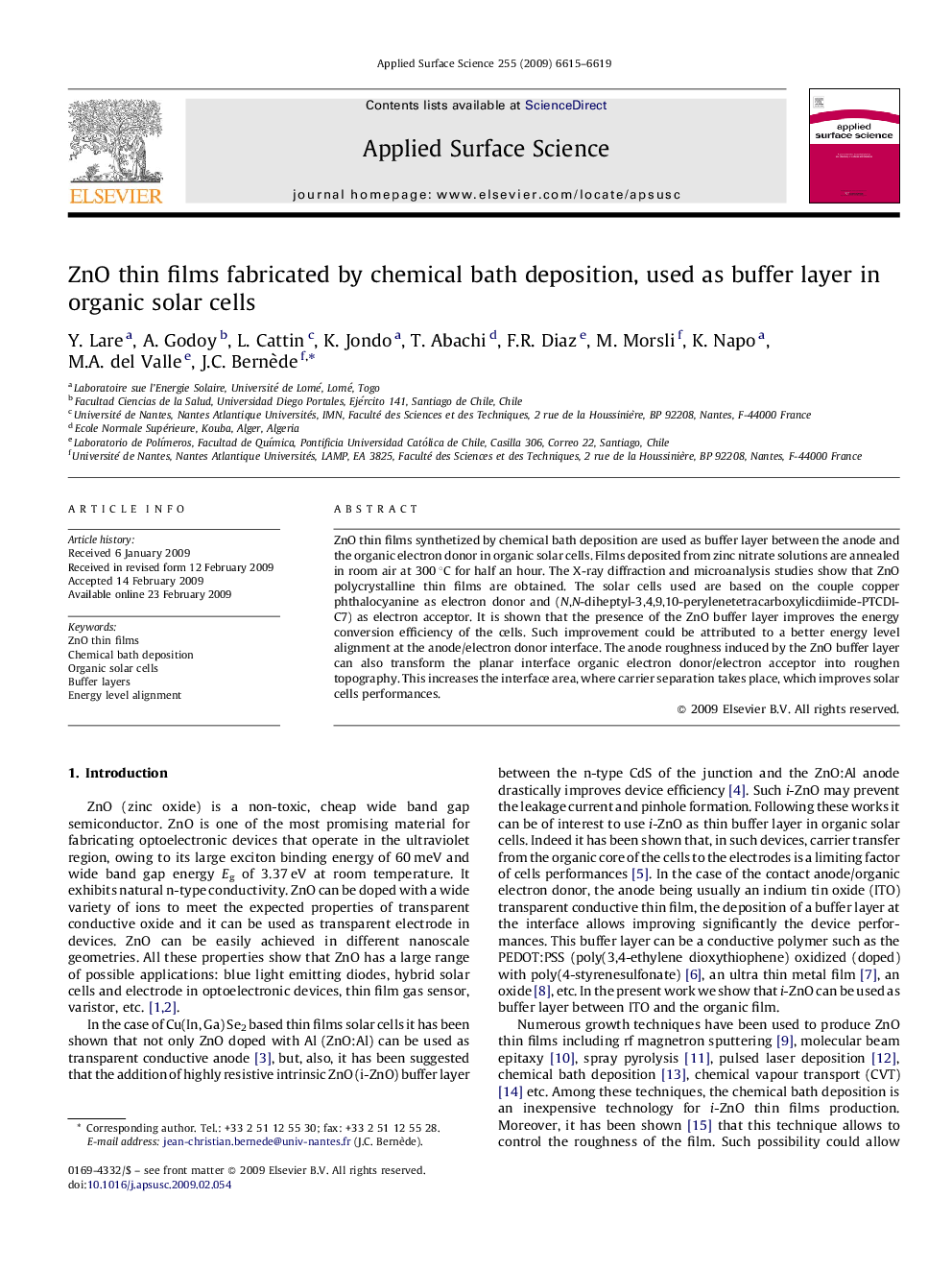| Article ID | Journal | Published Year | Pages | File Type |
|---|---|---|---|---|
| 5359796 | Applied Surface Science | 2009 | 5 Pages |
Abstract
ZnO thin films synthetized by chemical bath deposition are used as buffer layer between the anode and the organic electron donor in organic solar cells. Films deposited from zinc nitrate solutions are annealed in room air at 300 °C for half an hour. The X-ray diffraction and microanalysis studies show that ZnO polycrystalline thin films are obtained. The solar cells used are based on the couple copper phthalocyanine as electron donor and (N,N-diheptyl-3,4,9,10-perylenetetracarboxylicdiimide-PTCDI-C7) as electron acceptor. It is shown that the presence of the ZnO buffer layer improves the energy conversion efficiency of the cells. Such improvement could be attributed to a better energy level alignment at the anode/electron donor interface. The anode roughness induced by the ZnO buffer layer can also transform the planar interface organic electron donor/electron acceptor into roughen topography. This increases the interface area, where carrier separation takes place, which improves solar cells performances.
Keywords
Related Topics
Physical Sciences and Engineering
Chemistry
Physical and Theoretical Chemistry
Authors
Y. Lare, A. Godoy, L. Cattin, K. Jondo, T. Abachi, F.R. Diaz, M. Morsli, K. Napo, M.A. del Valle, J.C. Bernède,
